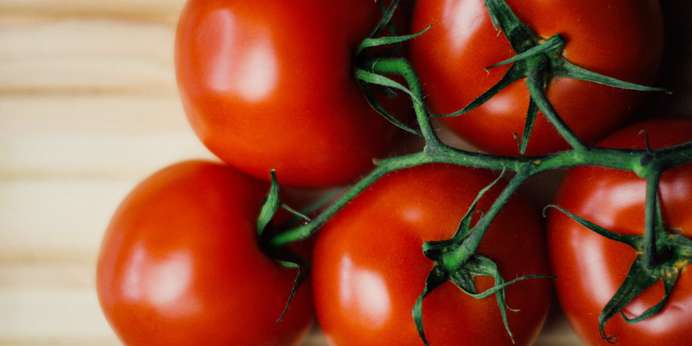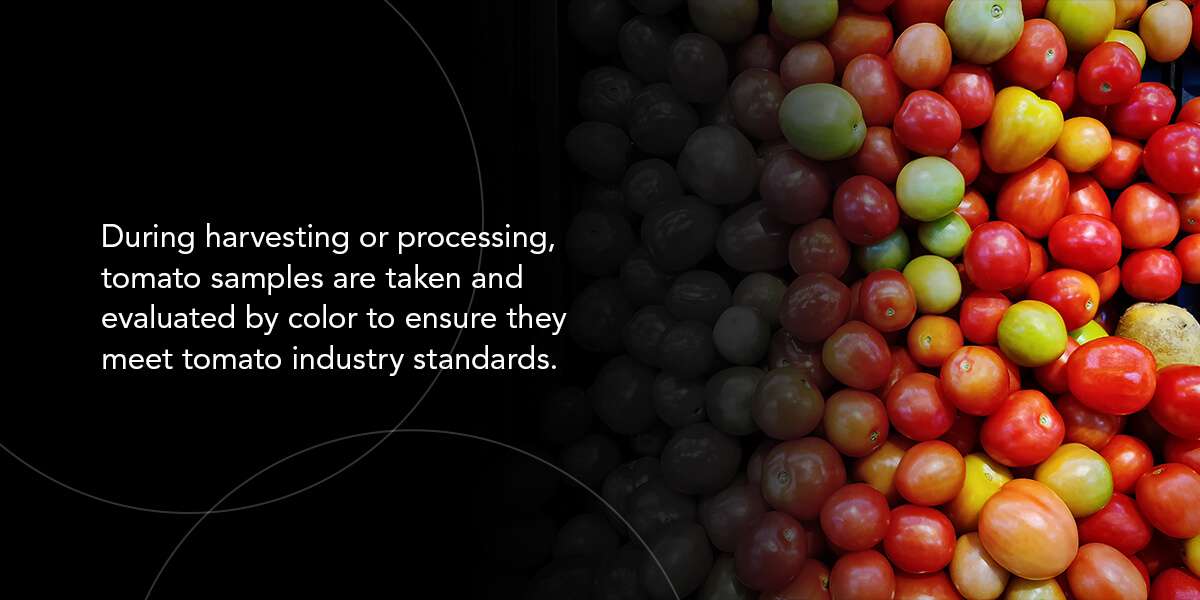
Color is an important attribute of tomato quality. It is therefore precisely measured in raw tomatoes and tomato products to ensure consistent quality.
The colorimetric grading scale and tomato grading standards help producers, tomato processors, and other stakeholders select the right tomatoes. Colorimetric scores quantify color to create the measurements needed to relate product quality to a grading scale. These scores and the grading process have been developed through extensive research and analysis to ensure color consistency and maturity.
Today's technological advancements in colorimetric measurement help offer higher standards for tomatoes and tomato-based products by providing fast and accurate testing of tomato color.
What Is Tomato Grading?
Tomato grading is a process for categorizing tomatoes by specific standards. The sizes and color of tomatoes are two factors considered in the grading process. Tomato grading helps set the price for tomatoes and can influence how they are stored, packaged, marketed, and shipped.
The U.S. Department of Agriculture (USDA) lists the following tomato grades and standards:
- U.S. No. 1. These tomatoes must be correctly formed and developed, smooth, clean, and mature. They must have uniform color and not be too soft. U.S. No. 1 tomatoes must also be free from damage, including sunscald, decay, and freezing.
- U.S. No. 2. These tomatoes must be mature, clean, well developed, and uniform in color. They must not be overripe, but they can be slightly rough in texture. They must not be seriously damaged and must specifically show no signs of decay, sunscald, or freezing damage.
- U.S. Combination. These tomatoes consist of at least 60% of U.S. No. 1 tomatoes, with the remainder being U.S. No. 2 tomatoes.
- U.S. No. 3. These tomatoes need to be clean, mature, and uniform in color. They should be well developed and not overripe, but they may have irregular shapes. They must not show any signs of freezing injury, decay, and serious sunscald damage or any other significant damage.
As part of tomato grading, the USDA considers color classification when evaluating the maturity of and thus grading of red-fleshed tomatoes at different tomato ripening stages. The USDA classifies tomatoes into the following colors:
- Green. These tomatoes have a fully light green to dark green surface.
- Breakers. On no more than 10% of the surface of these tomatoes, green gives way to other colors, such as yellow, red, or pink.
- Turning. On 10%-30% of the surface of these tomatoes, green gives way to red, pink, red, or a combination of these colors.
- Pink. On these tomatoes, 30%-60% of the surface is pink or red.
- Light red. On these tomatoes, at least 60% of the surface is red or pink-red. No more than 90% of the tomato surface can be red.
- Red. These tomatoes have red on more than 90% of their surface.
There is an objective colorimetric standard scoring system to determine product maturity and quality.
Colorimetric measurement and spectrophotometry are continually developing to meet the standards set forth by the USDA (United States Department of Agriculture). The USDA Processed Products Standards and Quality Certification Program uses a minimum standard grading chart to identify product value based on color measurement and consistencies.
Color is such a strong indicator of product quality that 30 of the 100 points awarded to the product are solely attributed to color alone. However, color measurement does present its challenges and can vary throughout the different stages of development and ripening process.



